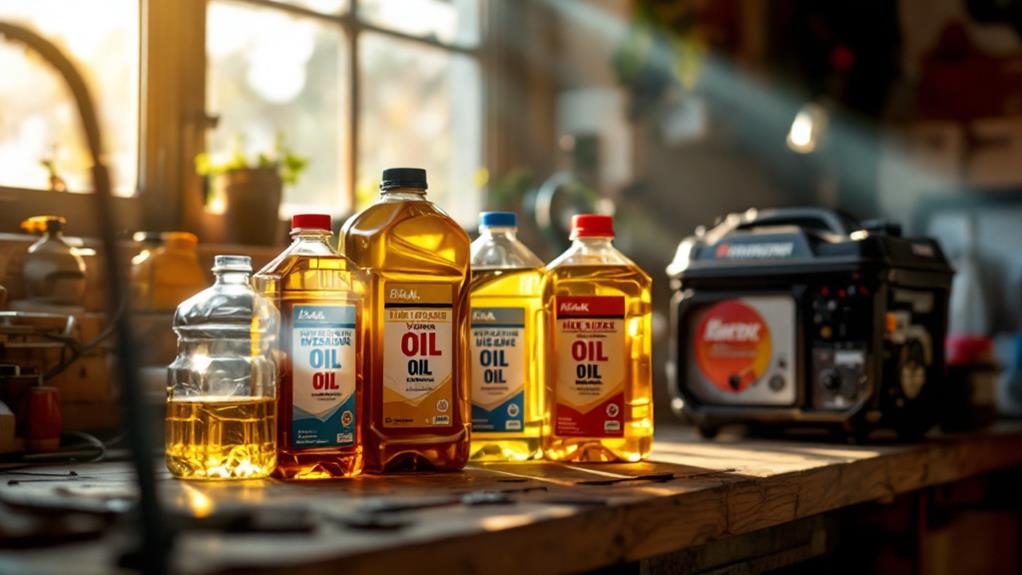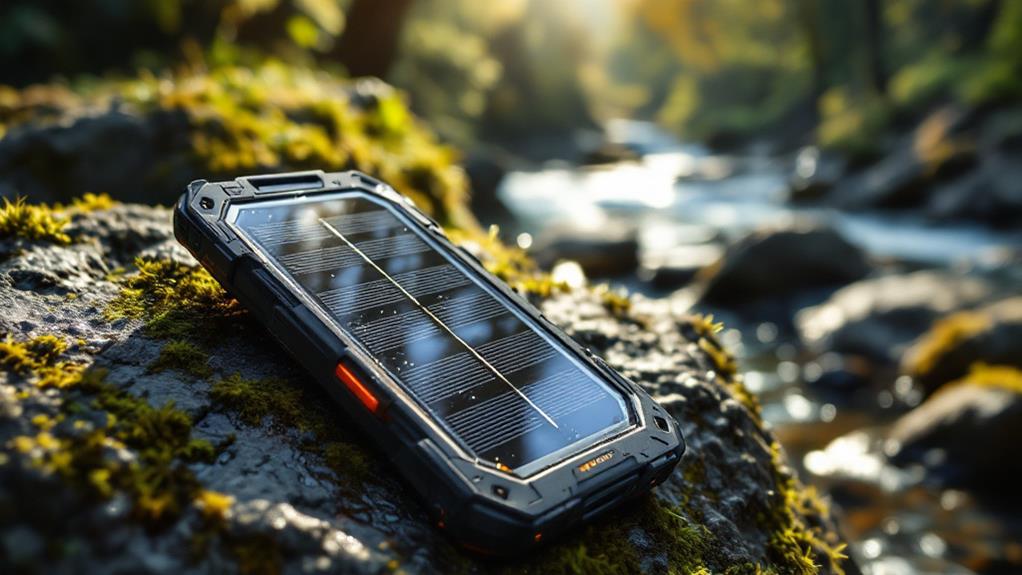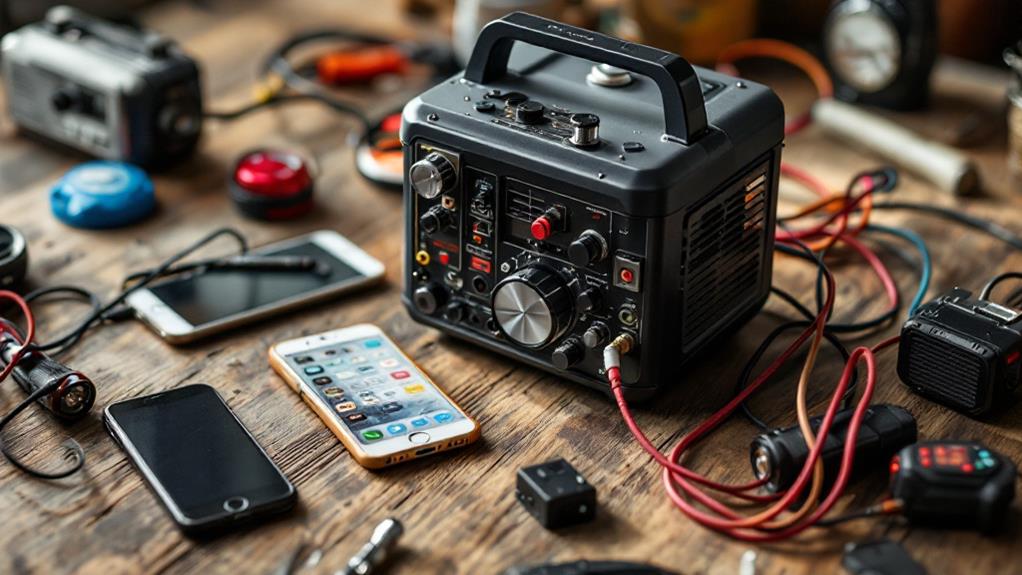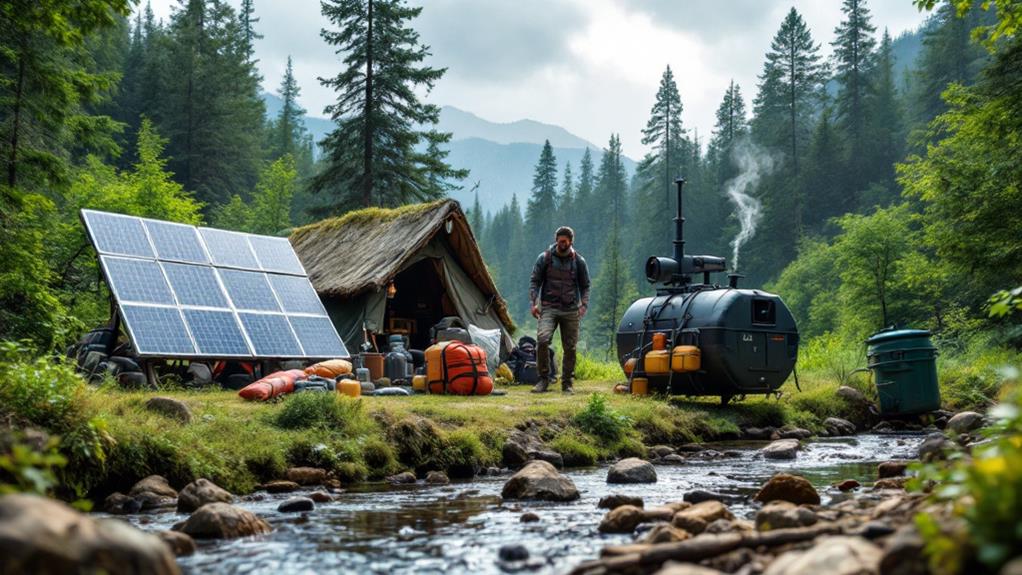Essential Accessories for Your Gas Generator: What You Need to Be Prepared
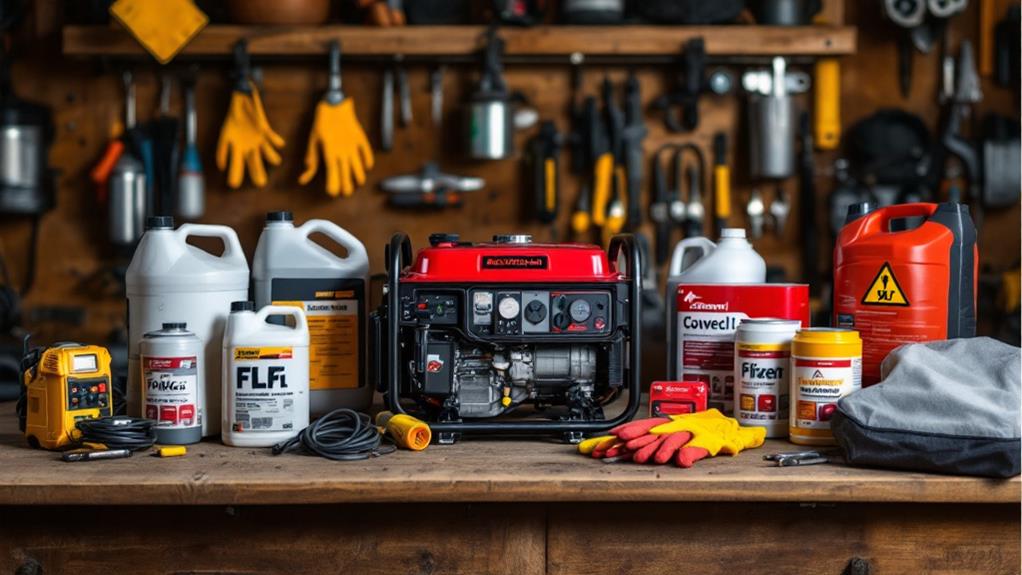
To guarantee your gas generator is always ready for action, you'll need several essential accessories. Start with fuel stabilizers to prevent fuel degradation and transfer switches for safe integration with your home's electrical system. Don't forget heavy-duty extension cords, weatherproof covers, and carbon monoxide detectors for safety. Maintenance kits will keep your generator running smoothly, while wheel kits improve mobility. These accessories enhance reliability, safety, and convenience during power outages. By properly equipping your generator, you'll be prepared for any situation that calls for backup power. Explore more must-have accessories to maximize your generator's potential.
Fuel Stabilizers
While you may not think about it often, fuel stabilizers are crucial for maintaining your gas generator's performance and longevity. These additives prevent fuel degradation, which can occur when gasoline sits unused for extended periods. Without a stabilizer, your generator's fuel can deteriorate in as little as 30 days, leading to starting issues and potential engine damage.
When choosing from various fuel additive options, look for stabilizers specifically designed for small engines and long-term storage. These products typically contain antioxidants and corrosion inhibitors to protect your generator's fuel system. Apply the stabilizer according to the manufacturer's instructions, usually adding it to a full tank of fresh gasoline.
Proper storage techniques are equally important. After adding the stabilizer, run your generator for a few minutes to circulate the treated fuel throughout the system. Store your generator in a cool, dry place away from direct sunlight and extreme temperatures. For extended storage, consider draining the fuel tank and carburetor completely. By using fuel stabilizers and following proper storage practices, you'll guarantee your gas generator is ready to perform when you need it most.
Transfer Switches
Transfer switches are a key component in safely integrating your gas generator with your home's electrical system. They prevent backfeeding, which can be dangerous to utility workers and damage your appliances. You'll need to choose between automatic transfer switches and manual transfer switches, each with its own benefits.
Automatic transfer switches detect power outages and seamlessly switch your home to generator power within seconds. They're convenient and ideal for guaranteeing continuous power to critical systems like medical equipment or sump pumps. However, they're more expensive and complex to install.
Manual transfer switches require you to physically flip a switch to change power sources. They're more affordable and simpler to install but require your presence to activate. This option works well if you're usually home during outages or don't have critical systems that need immediate power restoration.
When selecting a transfer switch, consider your budget, electrical needs, and local building codes. Ensure it's properly sized for your generator and home's electrical load. Always have a licensed electrician install your transfer switch to guarantee safety and code compliance.
Extension Cords
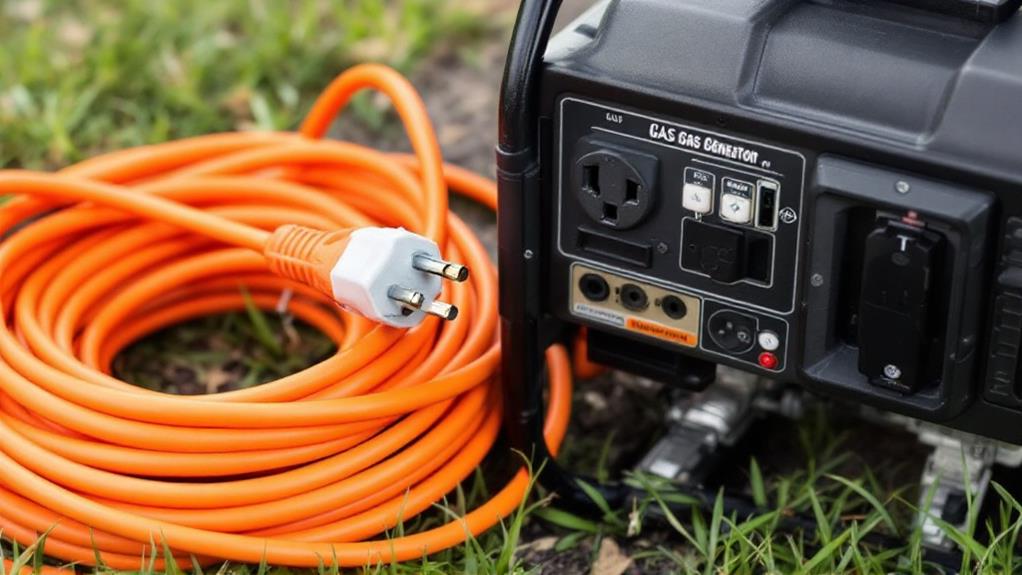
Extension cords are essential accessories for your gas generator, allowing you to power devices and appliances that aren't near the generator itself. When choosing extension cords for your generator, prioritize heavy-duty, outdoor-rated cords that can handle the power load you'll be drawing. Look for cords with a thick gauge (12 or 14 AWG) to minimize voltage drop over longer distances.
It's imperative to match the cord's amperage rating to your generator's output. Never overload an extension cord, as this can lead to overheating and potential fire hazards. Consider using multiple cords for different appliances rather than daisy-chaining them together.
To protect your devices, invest in surge protectors that can be connected between the extension cord and your appliances. These will safeguard against voltage spikes that can damage sensitive electronics.
Don't forget about proper grounding equipment. Ensure your generator and extension cords are correctly grounded to prevent electrical shocks and maintain safety. Use a grounding rod if necessary, especially when operating your generator in wet conditions.
Regularly inspect your extension cords for wear, damage, or fraying. Replace them immediately if you notice any issues to maintain safe operation during power outages.
Weatherproof Covers
Protecting your generator from the elements is just as important as powering your devices safely. Weatherproof covers are essential accessories that shield your gas generator from rain, snow, dust, and debris. These covers are typically made from heavy-duty, water-resistant materials like polyester or vinyl, guaranteeing your generator stays dry and clean when not in use.
When choosing a weatherproof cover, look for one that's specifically designed to fit your generator model. A proper fit prevents water from seeping in and safeguards crucial components from moisture damage. Some covers feature reinforced corners and UV-resistant coatings for added durability.
For long-term storage, consider investing in durable storage containers or waterproof storage cases. These provide an extra layer of protection against extreme weather conditions and potential pests. Many of these containers are stackable, making them ideal for organizing your generator and other accessories.
Remember to always let your generator cool down completely before covering it. Regularly inspect your cover for tears or wear, and replace it as needed to maintain optimal protection. With a quality weatherproof cover, you'll extend your generator's lifespan and ensure it's ready for action when you need it most.
Carbon Monoxide Detectors
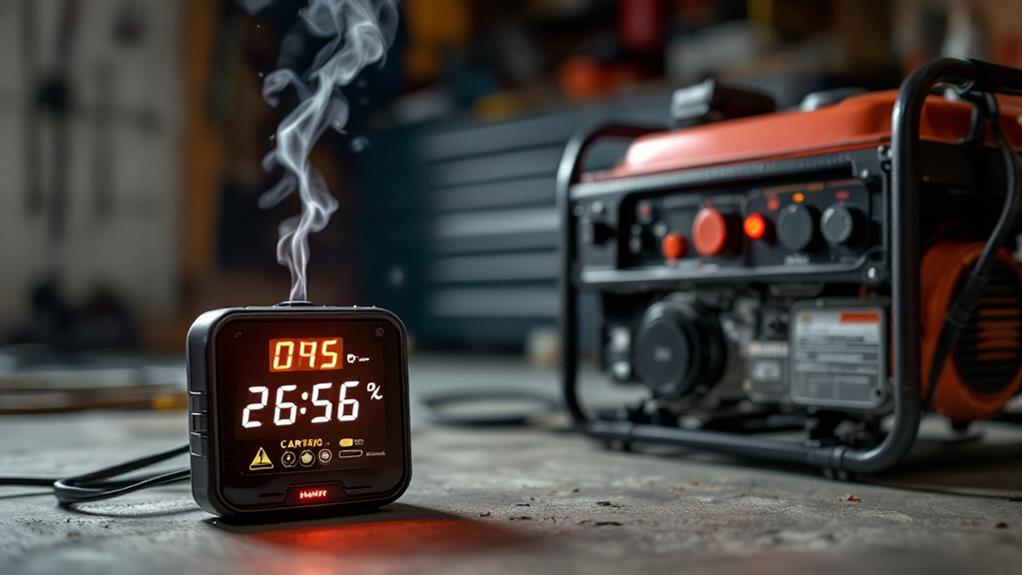
One of the most critical safety accessories for your gas generator is a carbon monoxide detector. This device can save your life by alerting you to dangerous levels of this odorless, colorless gas that's produced when fuel is burned. You should install carbon monoxide detectors in every sleeping area and on each level of your home, especially near your generator's location.
Proper installation is pivotal for these detectors to function effectively. Place them at least 15 feet away from fuel-burning appliances and about 5 feet above the floor. Don't put them in areas with high humidity or direct sunlight, as this can affect their performance. Make sure you follow the manufacturer's instructions carefully during installation.
Don't forget to maintain your carbon monoxide detectors. Replace the batteries at least once a year and conduct monthly tests to guarantee they're working correctly. Annual inspections by a professional can provide additional peace of mind. Remember, these devices have a limited lifespan, typically 5-7 years, so mark your calendar for replacement. By prioritizing carbon monoxide detection, you're taking a paramount step in protecting yourself and your loved ones from this silent threat.
Maintenance Kits
A well-stocked maintenance kit is essential for keeping your gas generator in top shape. It'll help you perform routine upkeep and address minor issues promptly, ensuring your generator's reliability when you need it most.
Your maintenance kit should include oil filters and spark plugs, two critical components that require regular replacement. Oil filters keep your generator's engine clean by removing contaminants, while spark plugs ignite the fuel-air mixture for proper combustion. Stock up on these items to avoid last-minute rushes during emergencies.
Don't forget to include engine oil, air filters, and fuel stabilizer in your kit. You'll also need basic tools like wrenches, screwdrivers, and pliers for various maintenance tasks. A multimeter can help you diagnose electrical issues, while a fuel funnel makes refilling easier and cleaner.
Consider adding a generator cover to protect your unit from the elements when not in use. Finally, keep a detailed maintenance log to track service intervals and parts replacements. With an extensive maintenance kit at your disposal, you'll be well-prepared to keep your gas generator running smoothly for years to come.
Wheel Kits
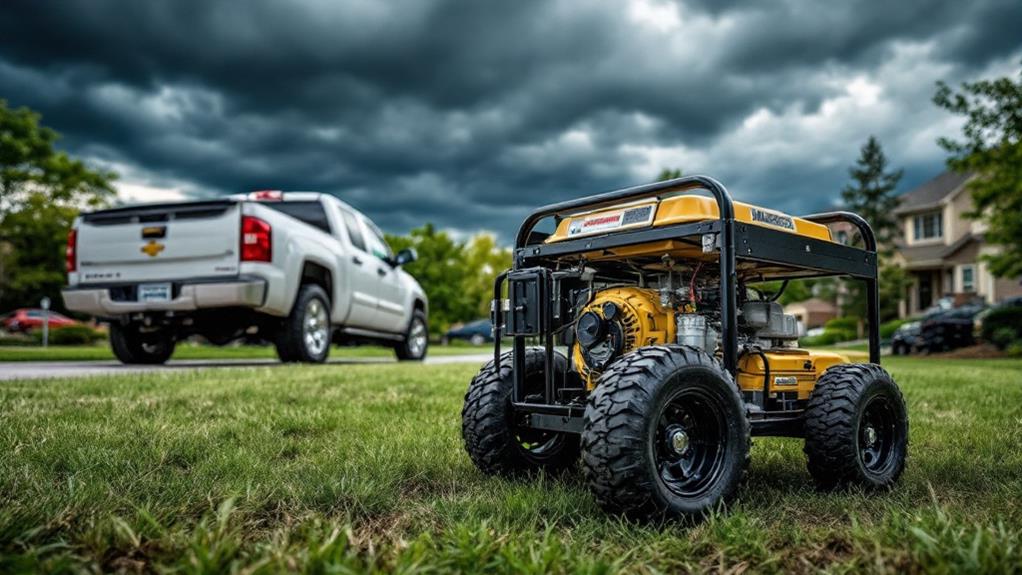
While proper maintenance keeps your generator running smoothly, mobility can be just as important. That's where wheel kits come in handy. These accessories transform your stationary generator into a portable powerhouse, allowing you to easily move it around your property or transport it to different locations.
Most wheel kits consist of sturdy steel frames with pneumatic tires, designed to handle various terrains and absorb shocks during transportation. The pneumatic tires provide better traction and maneuverability compared to solid wheels, making it easier to ascertain uneven surfaces or grassy areas.
When choosing a wheel kit, guarantee it's compatible with your specific generator model. Look for kits with durable construction and weight capacity that exceeds your generator's weight. Some kits also include handles or hitch attachments, further enhancing portability and ease of use.
Installing a wheel kit is typically straightforward, often requiring just basic tools and minimal mechanical skills. Once installed, you'll appreciate the added flexibility and convenience. Whether you're moving your generator for maintenance, storage, or use in different areas, a wheel kit makes the task much less cumbersome and reduces the risk of injury from lifting heavy equipment.
Generator Mufflers
Noise pollution from generators can be a significant nuisance, but generator mufflers offer an effective solution. These exhaust silencers are designed to reduce the loud noise produced by your generator's engine, making it more bearable for both you and your neighbors. When choosing a generator muffler, you'll want to verify the size and type of your generator to guarantee compatibility.
There are various noise reduction solutions available, ranging from basic mufflers to more advanced models with multiple chambers for enhanced sound dampening. Some mufflers can reduce noise levels by up to 12-18 decibels, which can make a substantial difference in residential areas or campsites. You'll also want to look for mufflers made from durable materials like stainless steel to withstand high temperatures and resist corrosion.
Installation is typically straightforward, with most mufflers designed to bolt directly onto your generator's exhaust port. However, you may need to make minor modifications or use adapters for a perfect fit. Remember to regularly inspect and clean your muffler to maintain its effectiveness and prevent any potential backpressure issues that could affect your generator's performance.
